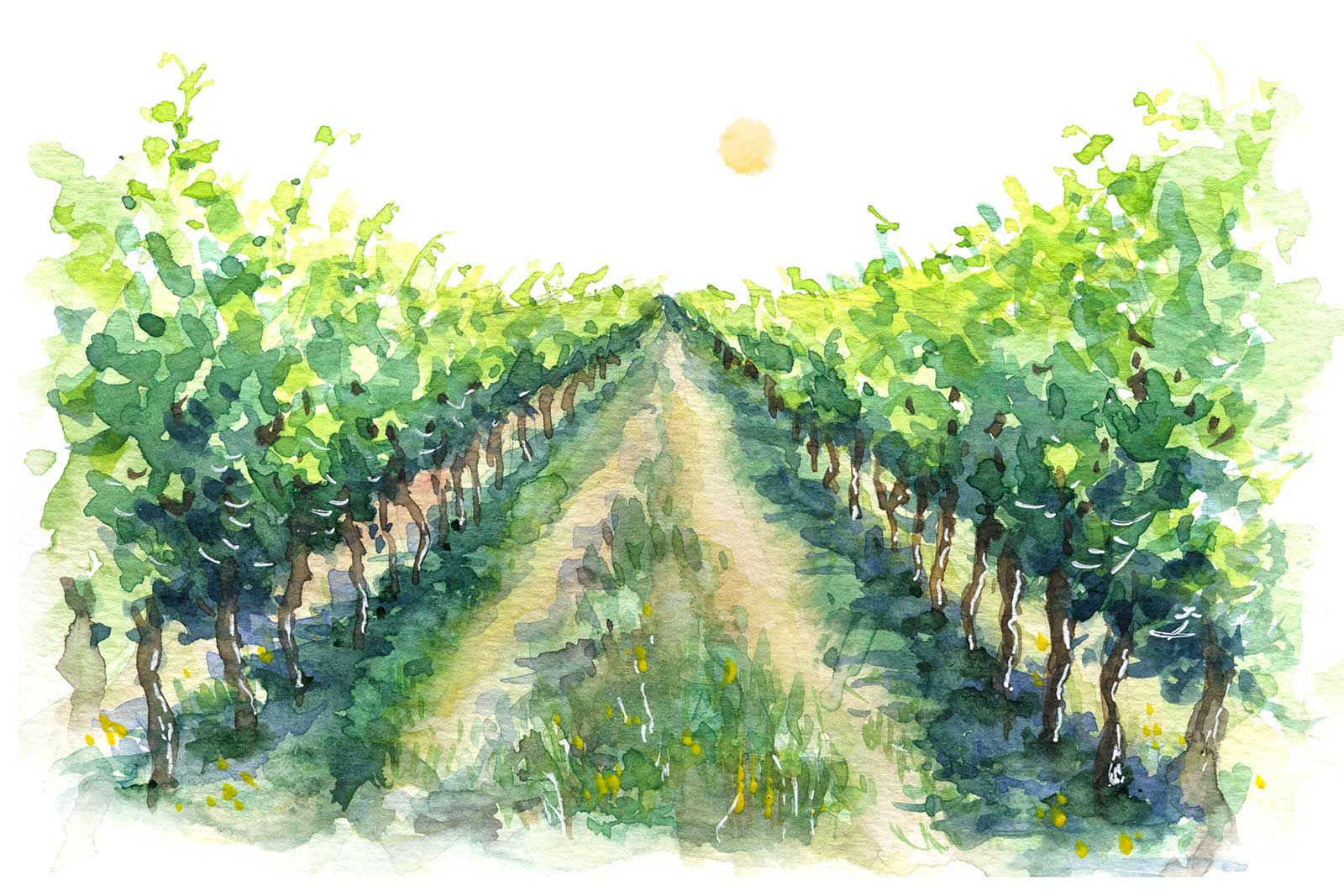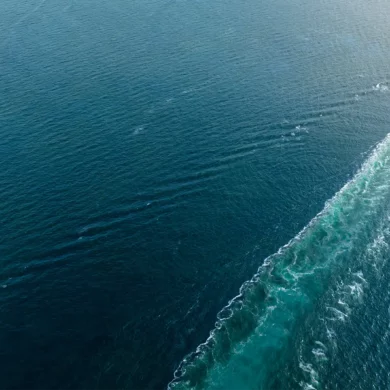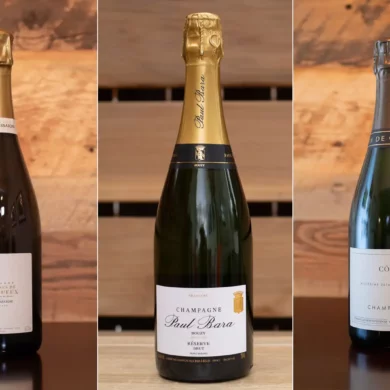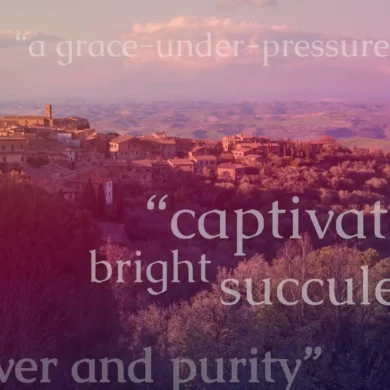For wine drinkers, summer is the season of in-your-face marketing. Sure, the holidays are insane for anyone in the wine business, but that’s when wine sells itself. As the weather heats up, the wines at the front of the store often turn pink, and anything in a can gets an extra push because of concerts, picnics and pickleball (or whatever else is trending that particular year).
Unfortunately, most of what’s shoved in our face as “summer wine” is boring — or at the very least, predictable. Oh, it is hot? Here is some liquid. You can chill it. The swill that seems to infiltrate everything from my Instagram feed to PR pitches to the front display at my local liquor store is rather sad. What about intrigue and surprise? Are we expected to leave them at the door like a pair of grass-stained sneakers after mowing the lawn?
What we all need is a reminder on why we drink wine in the first place. Not for its cleanliness or wellbeing, nor its zero sugar and 3 carbs. We drink wine for the story it transmits, and in summer, we want a different kind of read. We want a page-turner that keeps us guessing.
Of course not. What we all need is a reminder on why we drink wine in the first place. Not for its cleanliness or wellbeing, nor its zero sugar and 3 carbs. We drink wine for the story it transmits, and in summer, we want a different kind of read. We want a page-turner that keeps us guessing — that we can easily return to if we set the glass aside to water the garden for a moment.
So how do we find that in vinous form? A few things to consider.
1. Find a Great Wine Shop
This ought to be the first bit of advice on any wine column, regardless of topic. Seek out a place where you can ask anything without shame, and let them guide you to what excites their taste. This is far better than letting an algorithm decide for you.
Once found, take everything outlined below into account when you set foot in the shop.
2. Consider the Weather
When we taste wine, we detect several things at once: acidity, alcohol, astringency/tannin, body and flavor. Think of these elements as dials that can be turned up and down by conditions in the vineyard and winemaking facility. Every wine has its dials turned to different levels. Now, when the weather is hot, certain elements can become more fatiguing at higher levels.
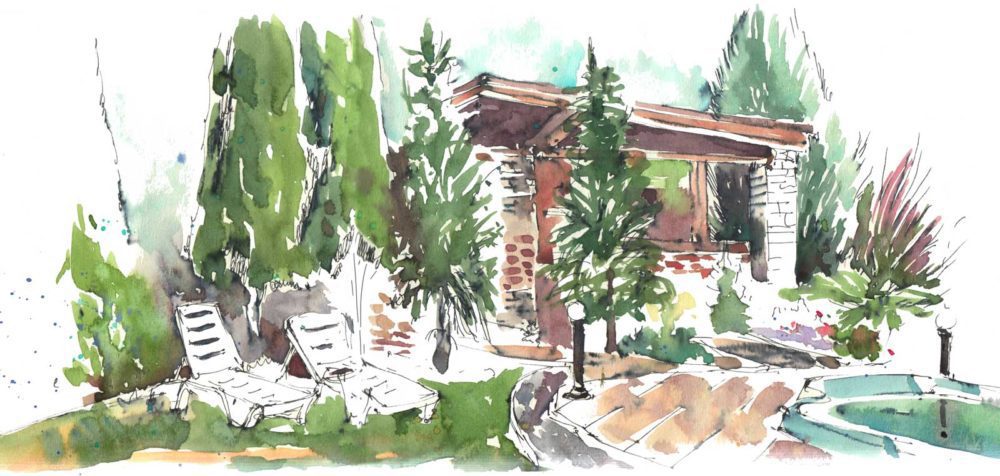
Tannin
That is especially true with tannin, that drying, gripping sensation in the sides of your mouth, commonly found in red wines, as well as some rosé, orange wines and even a few whites. Tannins come from the grape skins, seeds and sometimes stems, and they are there to lend complexity and texture as well as staying power. Wood aging vessels impart tannin as well. Yet in summer, this astringency in high concentration may as well be the antonym of refreshment.
Now, this doesn’t mean that all red wines ought to be put on hiatus for summer. You can seek out red wines from lower-tannin grapes such as the classic choices of Gamay or Barbera, or get esoteric and ask your wine merchant for Schiava (aka Trollinger), Piedirosso or Zweigelt. Just keep in mind that oak imparts its own tannic signature on wine, so also ask your merchant about how the wine was fermented and aged before release.
Now, many of my favorite red wines are a tour de force of tannins, and the thought of not having them from June to September honestly doesn’t cross my mind (nor should it cross yours if you are in the same camp). The goal isn’t avoiding tannins in summer, its enjoying them on your own terms. In this case, look for aged versions of these wines, such as five to 10 years past vintage, where you’ll have a better chance of a silkier tannin profile to work with the climate. Or, decant the wine for a few hours before serving, which can lend a little polish to the process.
Alcohol is the second element that tends to fatigue our palate faster in warm weather. Fortunately, this is one of the few data points you’ll always find on the label. Wines over 14.5% ABV are high, in my book, with 15% being a threshold I try to avoid in summer (a personal choice). Alcohol is detected as a gentle “burn” on the palate. Again, if refreshment is what you seek, that burn will be more noticeable in higher concentrations.
Acidity
Acidity comes across as the momentum of a wine. High acidity wines race across the palate, while lower acidity wines seem to settle. A lot of today’s most popular wines are high in acidity, but whether you like them too is a matter of choice. But take note of this element the next time you drink wine on a summer day. Do you find higher acidity to be a better accompaniment to the heat? Does a lower acidity wine feel flabbier? Does it matter to you? All of this is for you and you alone to settle for yourself, but the answers will help you buy better wines to your taste for the season.
Bubbles
Lastly, there is effervescence to consider. Bubbles lend lift and texture, and — as a friend of mine in Chicago pointed out — can be a godsend on hot and humid days, something I admittedly have little experience with in bone-dry Denver.
Bubbles lend lift and texture, and can be a godsend on hot and humid days.
But you might also want to consider the aggressiveness of the bubbles, too. Wines that undergo their secondary fermentation in a tank (also known as the Charmat method) typically have a prickly profile to their bubbles. Col fondo, sui lieviti or pétillant-naturel wines tend to be more easy going. Better yet? An aged traditional-method sparkling wine (think: Champagne, Crémant, Cava, Franciacorta or Trentodoc) with longer lees aging will have the glossiest bubbles, which I find most refreshing of all.
For a hyper-niche wine that might just be the ultimate summer sparkler, let’s return to Franciacorta and its category for lower-atmospheric pressure wines called Satèn. These rare wines are dazzling for their patient presence, richness and complexity, and pitch-perfect acidity that nicely contrasts a lazy summer’s night.
3. How Social Will This Wine Be?
Sourcing the right summer wines is all about giving yourself options to match the unique contexts of the season. That often means more time drinking with friends and family outdoors.
With that in mind, I like to look for wines that I can buy easily in multiples (for example, 3 x $20–$25 range) that are lower in alcohol (under 13% ABV) and that afford the right balance of easy-drinking and intrigue. I may not be contemplating the details because I’m busy chatting and catching up with people, but I sure don’t want to drink something anonymous either. If there is a story waiting to be told in the wine, I want to get to it in short order.
Spain’s Txakoli, Austria’s Wiener Gemischter Satz and Picpoul from southern France are currently front-of-mind for me in this department, but there are literally hundreds of wine appellations and grapes and off-the-grid styles that fit the bill. This is where a good wine merchant can rise to the challenge.
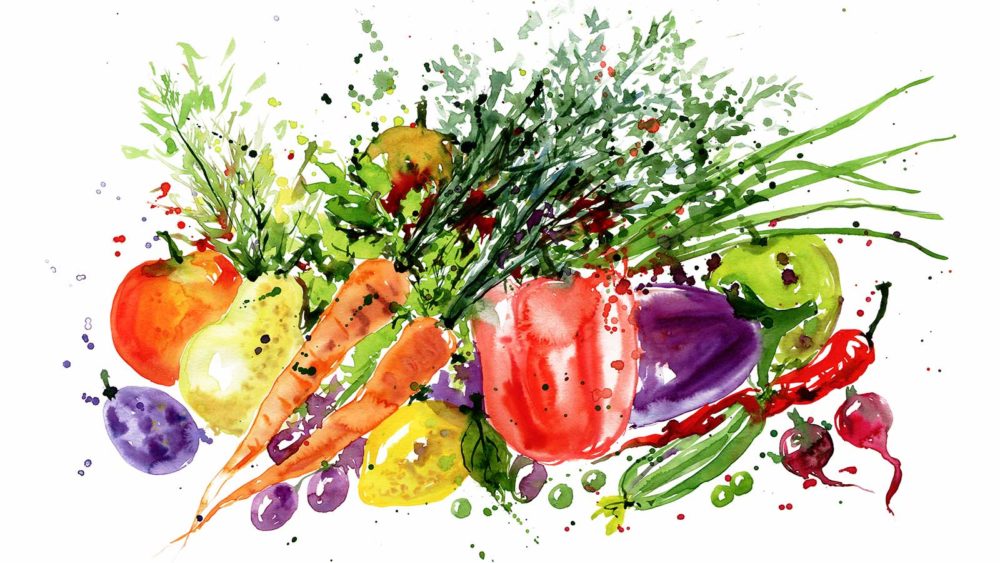
4. Finally, A Word on Seasonal Produce
If you care about wine, it is safe to assume you care about eating good food, right? Whether its a Palisade peach from your grocer, an ear of Silver Queen corn straight from a farm stand, or a handful of gem lettuce from your backyard garden, summer’s bounty of local, fresh produce is the taste of summer. One of my favorite tasks in selecting a wine during this season is finding one to highlight and enhance seasonal produce, rather than overwhelm it.
This is where wines subtle in flavor and agile in palate presence win. To describe such a wine, it helps to describe what its not. Oaky Chardonnay. Punchy Sauvignon Blanc. Sharp Vermentino. Explosive Gewürztraminer. These oak-forward, fruit-forward, spice-forward wines shine brightly on their own, but I find them to be detracting from the delicate flavors of summer produce.
Instead, consider wines like the Carricante-based Etna Bianco, which whispers and transforms beautifully throughout the night. Or delicate and nutty Ribolla Gialla from Friuli, textural Muscadet from the Loire, and vivacious and always-amiable Vinho Verde from Portugal. Again, a good wine merchant will know these wines and — if they don’t carry them — offer a completely thrilling alternative in the same vein.
I hope this guidance kickstarts a few brainstorms before you stock up for whatever your summer holds.

